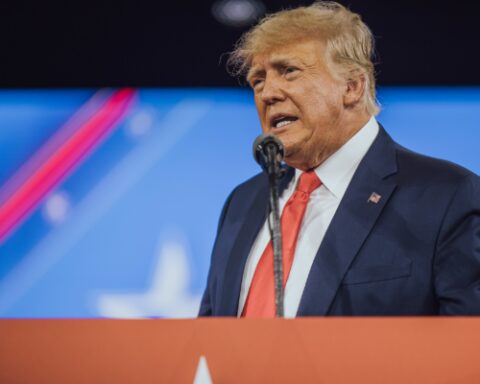Defense Secretary Pete Hegseth on Thursday announced a broadened U.S. military campaign in the Western Hemisphere, declaring a new operation—“Southern Spear”—aimed at dismantling “narco-terrorists” and strengthening defenses along America’s southern approaches.
The mission, he said, is being led by Joint Task Force Southern Spear in coordination with U.S. Southern Command, and is designed to protect the “Homeland” by removing violent trafficking networks from the region.
“The Western Hemisphere is America’s neighborhood – and we will protect it,” Hegseth wrote on social media. He emphasized that the operation seeks to secure the country “from the drugs that are killing our people,” underscoring a point the administration has repeatedly made: the drug trade is not merely a law enforcement challenge, but a national security threat that demands sustained military attention.
The Pentagon declined to elaborate beyond Hegseth’s public statement, referring inquiries back to his post. But the announcement followed a high-level White House briefing on Wednesday in which Hegseth, Joint Chiefs of Staff Chair Dan Caine, and senior military leaders reportedly presented President Trump with a range of options for countering destabilizing operations in the region, including possible land strikes against Venezuela.
The timing of the initiative coincided with news that the U.S. military carried out its 20th lethal strike on Monday against an alleged drug-smuggling vessel. That strike, which occurred in the Caribbean Sea, killed four “narco-terrorists,” according to a Pentagon official speaking anonymously. Since the counternarcotics surge began in early September, U.S. forces have killed at least 80 people across the Caribbean and Eastern Pacific. The administration has defended these actions as necessary to “curb the flow of illegal drugs into the U.S.”
“Southern Spear” itself is not entirely new in concept. In late January, the Pentagon announced plans for the Navy’s 4th Fleet to begin an operation under the same name, designed to “operationalize a heterogeneous mix of Robotic and Autonomous Systems (RAS)” to help detect and monitor illicit trafficking.
The effort was described as part of a broader strategy to integrate new technologies into Southcom operations, which span more than 30 countries across South and Central America and the Caribbean. It remains unclear how Thursday’s announcement relates to the earlier version of the initiative, but the intent appears consistent: tighten surveillance, increase interdiction pressure, and deny cartels freedom of movement.
This latest expansion builds on earlier steps taken by Hegseth. In early October, he announced the creation of a new counternarcotics joint task force explicitly meant to “crush” drug cartels operating in the Caribbean Sea.
Southcom Commander Adm. Alvin Holsey argued at the time that establishing a JTF around II MEF headquarters would improve the military’s ability to “detect, disrupt, and dismantle illicit trafficking networks faster and at greater depth.”
The administration has significantly increased its military presence in the region, sending warships, spy aircraft, F-35 fighter jets, and other assets as it ratchets up pressure on Venezuelan President Nicolás Maduro, whom U.S. officials have described as an “illegitimate leader.” This week, the USS Gerald R. Ford—the world’s largest aircraft carrier—arrived in Southcom waters with its strike group. The carrier brings more than 4,000 sailors, F/A-18 Super Hornets, and long-range Tomahawk missiles, further signaling that Washington intends to take a more assertive posture against narcotics networks and hostile state actors alike.
For the administration, “Southern Spear” reflects a broader strategic view: that instability in the hemisphere directly endangers American lives, and that confronting it requires both modern tools and a willingness to project power.
[READ MORE: As Schumer Faces Mounting Revolt, Fox News Host Predicts Jeffries Could Be Next]






